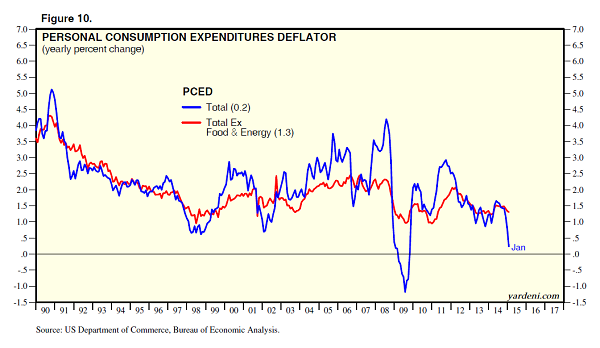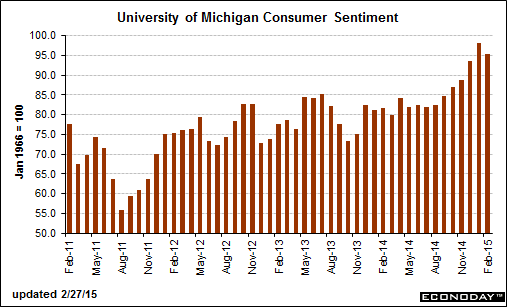The U.S. economy is stronger than it looks
The conventional wisdom goes something like this: Cheaper energy prices and a strengthening job market are creating ideal conditions for the American consumer. Surely, they deserve it after years of dealing with the aftermath of the housing bubble, rising health care and education costs, high debt levels, and stagnant wages.
So many were shocked earlier this week when the latest government data on personal spending seemed to show consumers battening down the hatches in a way that hasn't been seen in years. The numbers showed the first back-to-back decline in spending for December and January since late 2009.
Was the economy heading back into the freezer?
The answer, in all likelihood, is no. The economy, while not surging, continues to have some important strengths. But those growth drivers are being masked by the rigmarole surrounding the way statisticians measure things like income and spending.
As a result, what's known as the "personal consumption expenditures deflator" -- a measure of inflation in the things people buy -- has collapsed to a 0.2 percent annual rate, as shown in the chart above. By contrast, the so-called "core" measure of inflation that factors out food and energy, which tend to vary a lot from month to month, is a more normal 1.3 percent. In short, consumers are still spending at a level to keep the recovery on track.
The booster engine driving that spending is perhaps the biggest reason to think the economy remains on track. After adjusting for the deflationary impact of falling energy prices, real personal income is rising at an annual rate of 5.3 percent, the fastest growth since early 2013. Real consumption expenditures are growing at a 3.7 percent annualized rate.
Both these key measures of economic vitality point to healthy growth, and represent the continuation of trends that have been building for months. So that's good news.
Digging into the data, the bump in spending is being driven by non-durable goods and services. When combined with the recent uptick in the personal savings rate, that suggests consumers are playing it safe and treating the decline in gas prices as a temporary dividend. People are stashing some cash away and making small purchases instead of splurging on big-ticket items.
And that's OK -- prudent, even. It also sets the stage for a more robust and resilient American shopper. Paul Ashworth at Capital Economics expects many "have a lot of scope to increase real consumption in the first half of this year."
The combination of low inflation and wage growth has by one measure created the best conditions for U.S. consumers since the 1950s. I'm talking about what's known as the Misery Index, which was created in the 1970s at a time of economic stagflation -- the dreary combination of high inflation and high unemployment.
No wonder consumer sentiment has been soaring over the last few months, as shown above in the chart of the University of Michigan's Consumer Sentiment Index. As a result, I expect shopping malls and retail parking lots are going to get very crowded as winter's chill fades and eager spenders come out of hibernation.


